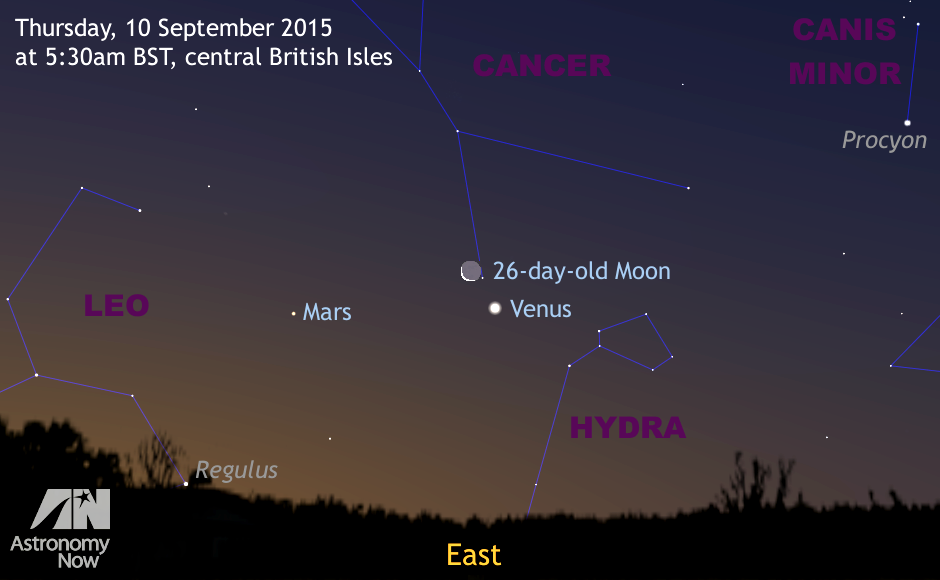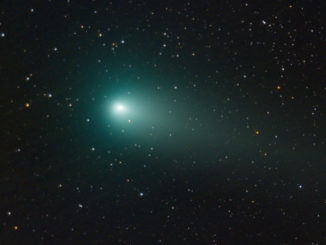
Observers in the UK wishing to see the beautiful juxtaposition of dazzling magnitude -4.5 Venus (the planet reaches greatest brilliancy on 20 September) and the slim, waning crescent of a 26-day-old Moon should set their alarms for 5:30am BST. The pair will lie just two degrees (or four full Moon breadths) apart, fitting comfortably in the same field of view of any typical binocular.
Given the Moon’s age in this lunation, its crescent phase on Thursday morning is a svelte 9 percent. Venus is a shade over 45 arcseconds in diameter, so a telescope magnification of just 40x will enlarge it to the same apparent size as the Moon to the naked eye. Virtually any telescope, then, will show that Venus also has a slim, 17 percent illuminated crescent matching the orientation of the Moon.
The Moon lies 247,800 miles (398,800 kilometres) distant on the morning of 10 September, while Venus is 138 times further away — 34.3 million miles (55.2 million kilometres) from Earth, to be precise.
If your eastern sky is particularly clear, look out for second-magnitude planet Mars ten degrees (the span of a fist at arm’s length, or two 10×50 binocular fields) to the left of Venus. There is currently a difference in brightness exceeding 300 times between these two planets!
Mars lies 230.4 million miles (370.8 million kilometres) from Earth on the morning of 10 September, so it is perhaps not surprising that its disc measures a paltry 3.8 arseconds across. Mars next comes to prominence at opposition in May 2016. Clear skies!
Inside the magazine
You can find out more about observing Venus and the Moon in the September edition of Astronomy Now in addition to a full guide to the night sky.
Never miss an issue by subscribing to the UK’s biggest astronomy magazine. Also available for iPad/iPhone and Android devices.




